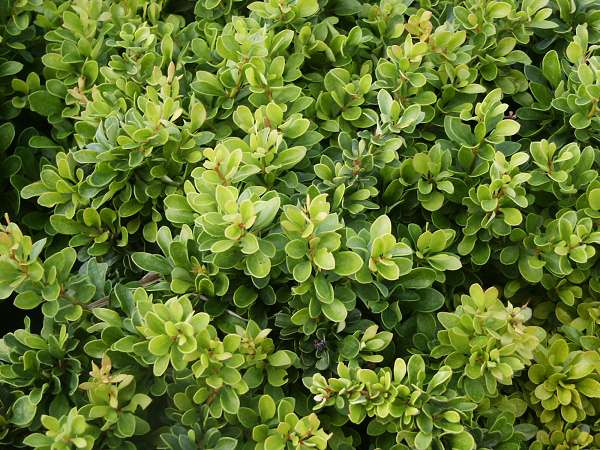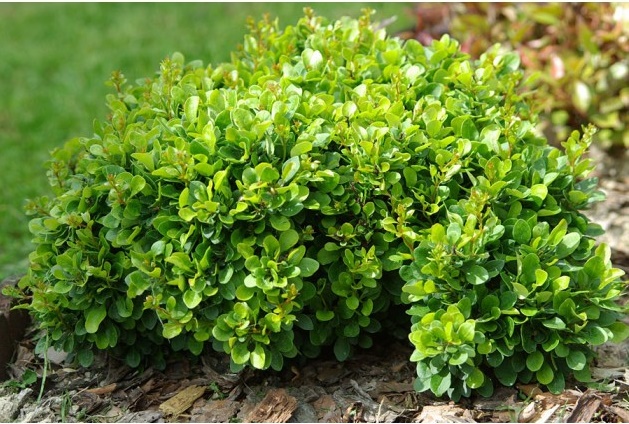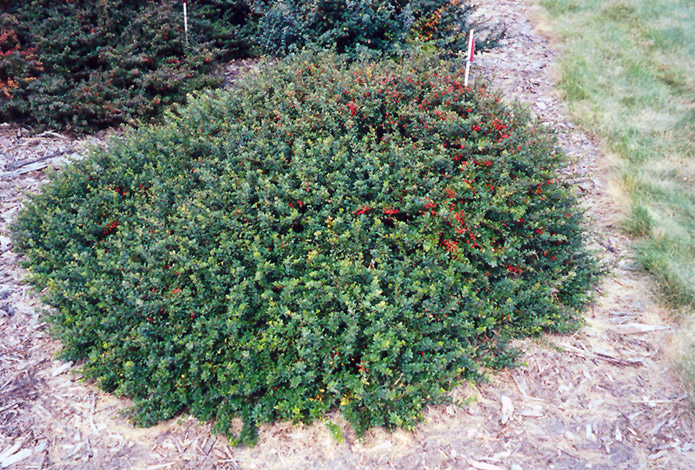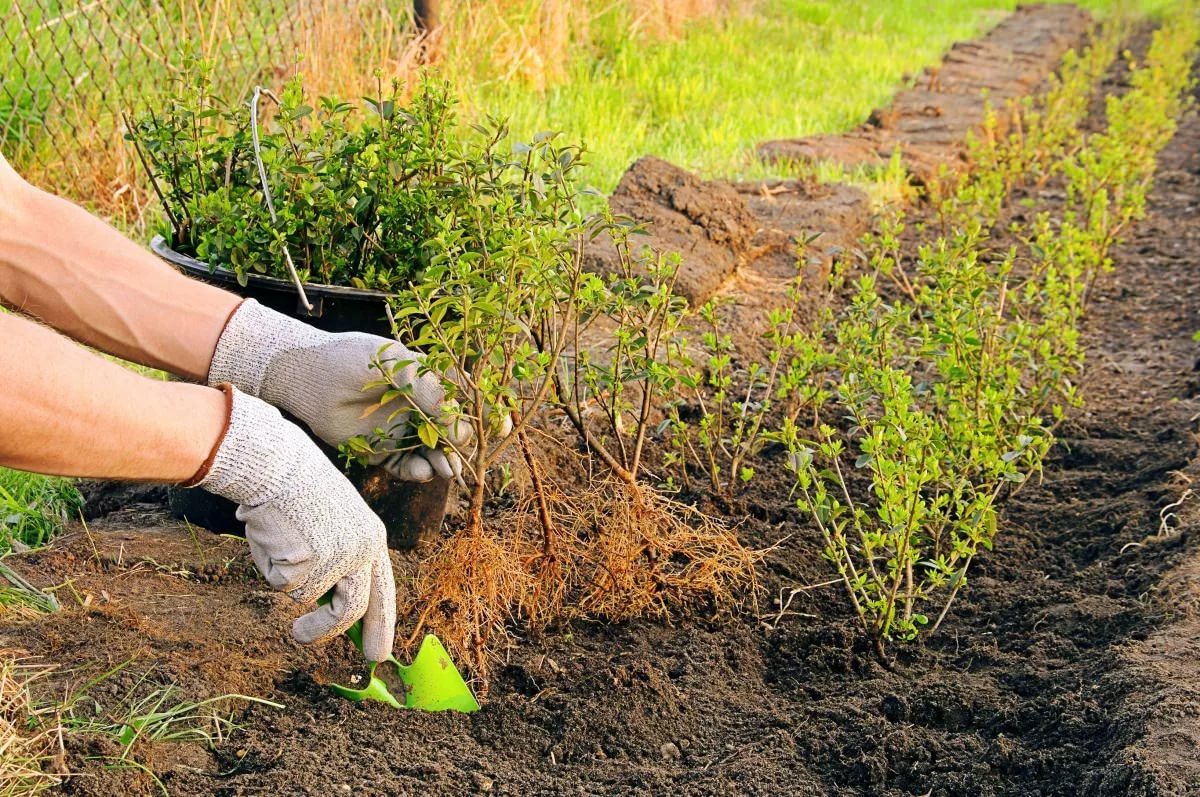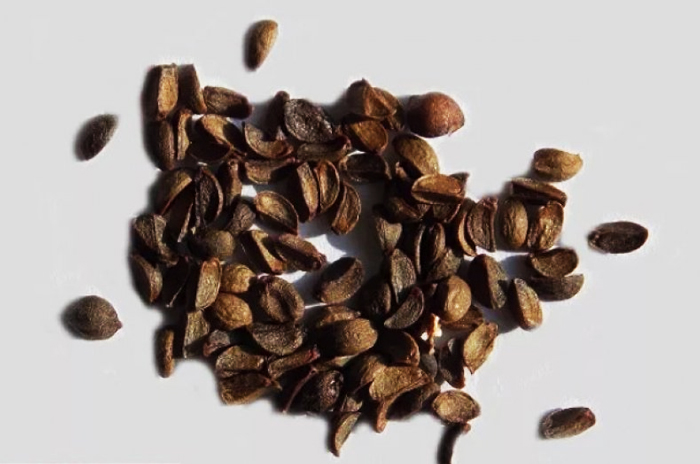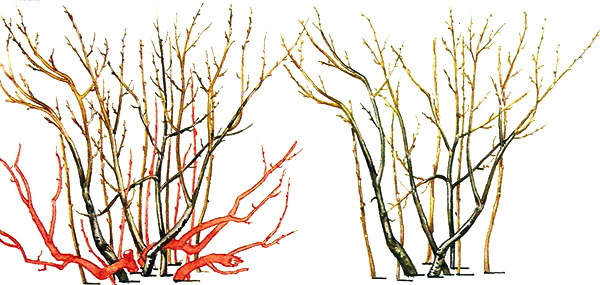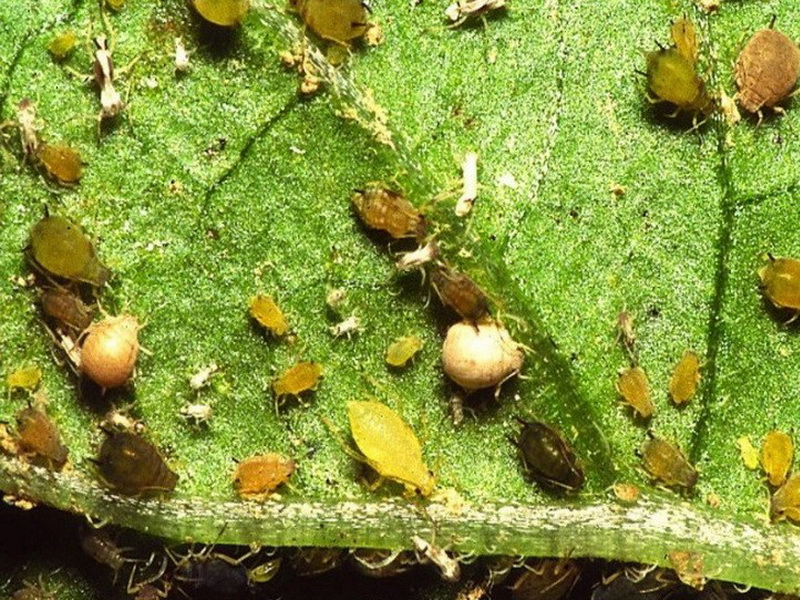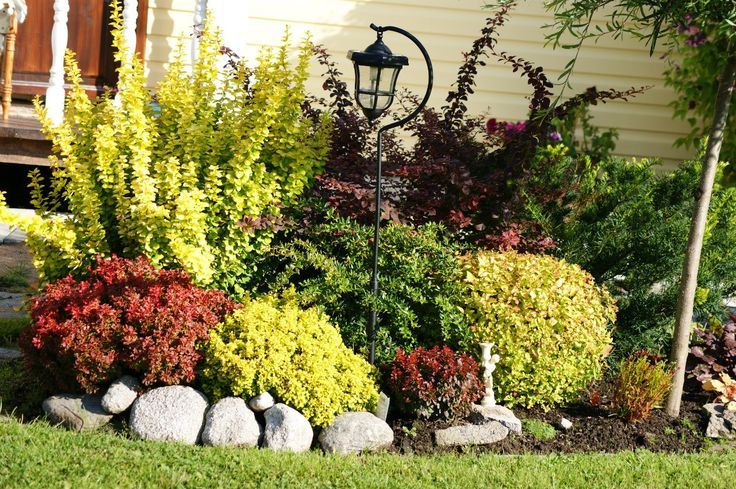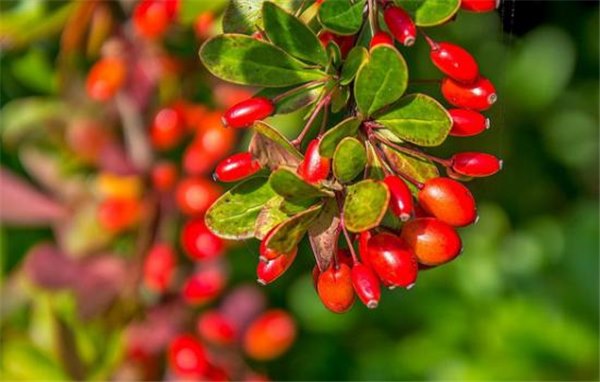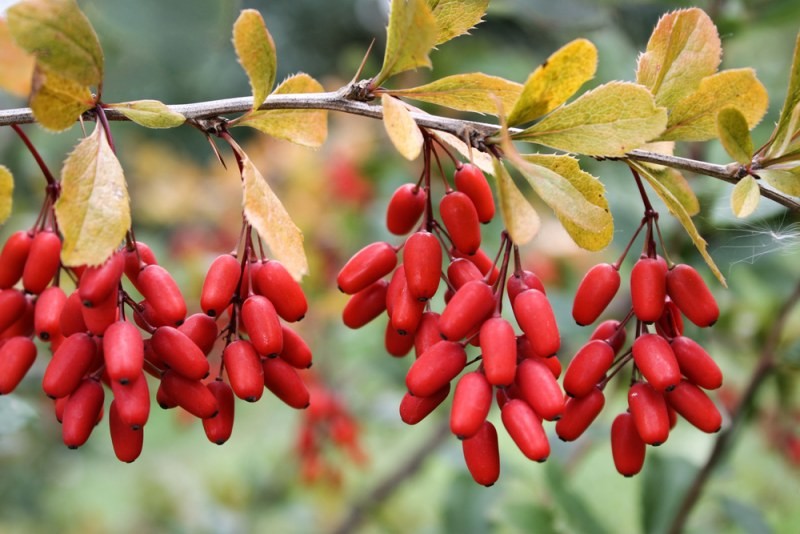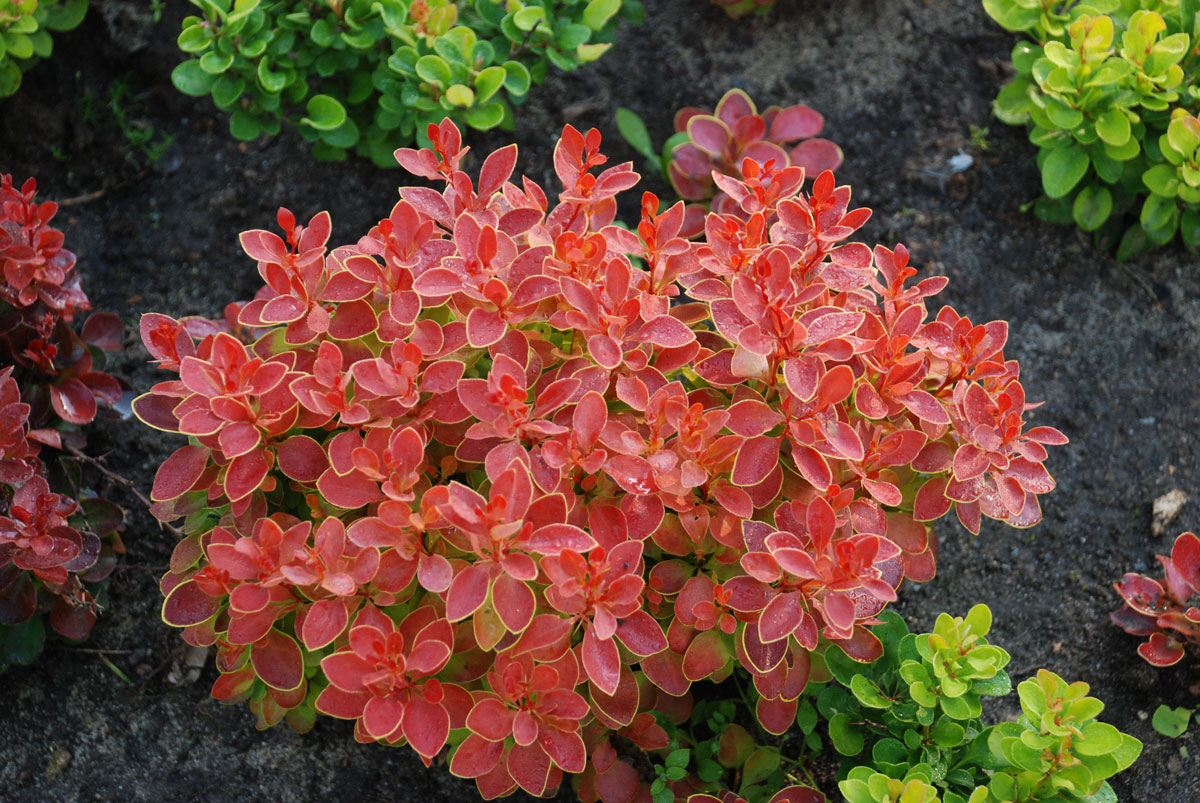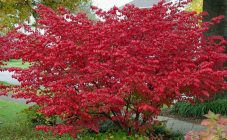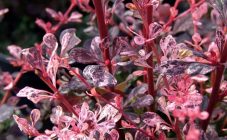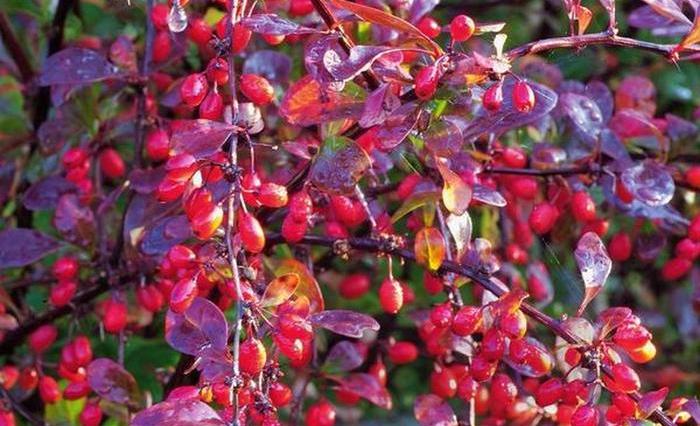Content:
Berberis thunbergii Kobold was developed by Dutch breeders in the 60s. last century. It should be noted right away that the name of the barberry in Russian does not sound like a translation, but like the spelling of the name in Cyrillic. Therefore, no matter how strange it may sound, but Kobold has a Russian transcription: Cobalt, Kobold, Kobold.
Description and characteristics of barberry Cobalt
Cobalt is a compact, decorative and graceful shrub that is a member of the Barberry family. This family is striking in its diversity, it is represented by more than 170 species, as well as the difference in forms and varieties.
The most famous and attractive are:
- barberry Thunberg Golden Rin;
- barberry Thunberg Kobold (Berberis thunbergii Kobold);
- barberry Thunberg Red Pillar.
All of them belong to dwarf ones, having low bushes with a height of 40-50 cm. Bushes of some varieties are slightly higher, but not more than a meter. Cobalt bushes are grown for beautiful emerald green foliage that does not lose its color during the spring-summer season and surprises with an orange-yellow color, combined with bright red berry beads, in the autumn months. The shrub begins to bloom in May, covered with pale yellow flowers in the form of bells. Barberry Thunberg Kobold has a lot of fruits. They are shiny in appearance, have bright red edible berries that ripen by the end of September.
The shoots of the bush are small, with small thorns located on them. In the autumn, the leaves do not always have time to turn into bright autumn colors, so you can observe the fall of green leaves with the onset of the first frost.
Barberry Cobalt, like none of the shrubs, is ideal for a miniature Japanese garden or rockery. The advantages appreciated by landscape designers include its slow growth, compact, cushion-shaped crown and small finishing size of the bush. That is why it will look perfect in borders, without taking more than 30-40 cm.
Growing features
Usually summer residents and owners of personal plots when buying a shrub are interested in how winter-hardy it is. In the conditions of central Russia and the Moscow region, barberries winter well. Young plants, while they get stronger, gardeners recommend covering them with dry leaves, spruce branches or peat for the first 2-3 years, thereby protecting them from frost. Adults, undergoing winter hardening, tolerate frosts normally.
The purchased bush must be planted out of the container in the place designated for it on the site. In principle, this is an unpretentious plant. Loves an open sunny or somewhat shaded place, but closed from the winds. For the leaves on the shrub to have a purple color, the bushes must be in full sun. If they grow in partial shade, the foliage will tend to be green.
The Cobalt bush is not demanding for the soil, but it will respond well to the fertile soil, it should be light and moist. In the description of the barberry Thunberg Kobold, it is mentioned that the plant is so unpretentious that it can grow on soils of poor fertility and rather dry. Rather, a shrub will better tolerate drought than stagnant waterlogging.
Planting and replanting bushes
Separately growing Cobolt bushes should have a distance of about 1.5 meters. If it is a hedge, in this case, the bushes need to be planted after 50-70 cm.The hole for the bush should have a depth of 40 cm, a diameter of 50 cm.A soil mixture is poured into it, consisting of 2 parts of sod land, 1 part of humus and 1 part sand. If the soil in the place where the barberries will be planted is acidic, you need to add either ash (200 g) or slaked lime (300 g) per 1 bush. Add a complex fertilizer consisting of potassium, phosphorus and nitrogen to the hole.
Sometimes it becomes necessary to transplant bushes. This should be done either in early spring or late autumn, before frost, when there are no leaves on the bushes. At this time, abundant watering is required. At normal times, barberry is watered no more than 1 time per week.
Reproduction of barberries
Reproduction is carried out by dividing the bush, cuttings, offshoots from the roots, grafts and seeds. The most commonly used procedure by gardeners is propagation by semi-lignified cuttings. Before planting cuttings, they are treated with stimulants for rooting.
If the Kobold barberry is propagated by seed, it must be stratified. For this, the seeds, poured into a linen bag, are placed in the cold. The best option would be to store seeds until spring at a temperature of 3-5 ° C. This is the temperature of the refrigerator. In April-May, you can plant these seeds in a greenhouse or garden bed. You can plant seeds in the fall into the ground to a depth of 2-3 cm. Mulching is carried out on the planted seeds.
The most difficult and painful for a bush is reproduction by dividing it into two parts. It is carried out in late autumn, after leaf shedding. You should try not to damage the rhizome much by separating it. If the bush has offspring, it is easy to separate them from the mother plant and transplant them to the right place. Vaccinations are done in early spring. But gardeners and summer residents resort to this type of reproduction very rarely, mainly those who like to create original ornamental plants are engaged in grafting.
Grooming and haircut
Since fertilizers were applied when planting barberry bushes, fertilizing is done from the second year. In early spring, urea is added to enhance growth. A bucket of water with 20 grams of urea diluted in it is poured under one bush. Further feeding is carried out once every three or four years.
Preparation of barberry Kobold for winter consists in mulching the trunk circle with peat or humus, in the spring digging this material with the ground. It is imperative that the soil is loosened after rains and irrigation, as well as weeding.
The bush requires minimal haircut and does not "clog" neighboring plants with branches. A haircut consists in the spring removal of painful branches or branches that have lost their decorative effect. Old bushes are also thinned out in spring. Hedges are cut 2 times a year: in early June and early August. When cutting, the twigs are removed that violate the shape of the trimmed hedge. If you are satisfied with the shape and height of the bush, you do not need to cut it.
Advantages and disadvantages of the variety
The main advantage of Thunberg Kobold, in contrast to other types of barberry, is its resistance to negative environmental factors and many diseases, along with this there is a small number of plant diseases that lead to the death of bushes. To prevent infestation by pests and diseases, you should periodically inspect the bushes.
The most common type of pest is the barberry aphid. Feeding on the sap of the plant, it causes the leaves to dry out.To combat it, a folk remedy is used - laundry soap. A solution from it (300 grams per 10 liters of hot water) is sprayed on bushes in the spring. Tobacco solution is no less effective. For this 500 gr. shag is brewed with 10 liters of boiling water. You can add laundry soap to the solution to enhance the effect.
Barberries are susceptible to powdery mildew. The nature of the disease is the same for all plants facing this problem. It appears as a white powdery bloom on leaves, branches and flowers. It is necessary to get rid of this disease by spraying with a sulfur-lime mixture and a 0.5% solution of colloidal sulfur. The plant is sprayed every three weeks until the disease is completely eradicated. It is better to cut off and burn the affected shoots.
Of the pests, the lover of eating the fruits of barberry is the flower moth. When it appears on the bushes, they are treated with a 0.1% solution of chlorophos or Decis.
The use of barberry Cobald
Because of their attractiveness, barberry bushes are often used in landscaping in various configurations. They can be used to decorate a rocky garden and an artificial reservoir. Barberry bushes fit perfectly into landscape compositions, look wonderful in borders. By using varieties of barberry in the garden or in your garden plot, you can successfully create a color palette.
The bushes are great as a low hedge. They cut well, giving the necessary shape. But the hedge will really become attractive after 4-5 years, when the bushes are thick enough.
